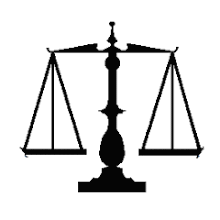The Indian Rupee is the original official currency of India. The English translation of "Rupee" is "silver," and the name exists because it was previously a silver coin. This very fact had severe consequences in the 19th century, when the strongest economies in the world were on the gold standard. The discovery of vast quantities of silver in the U.S. and various European colonies resulted in a decline in the relative value of silver to gold. Suddenly, the standard currency of India could not buy as much from the outside world. Such circumstances led to what is now referred to as "the fall of the Rupee."
During the period 1950-1951 until mid-December 1973, India followed an exchange rate regime with the Rupee linked to the Pound Sterling, except for the devaluations in 1966 and 1971. When the Pound Sterling floated on June 23, 1972, the Rupee's link to the British unit was maintained-thus, paralleling the Pound's depreciation and de facto devaluation.
In 1975, the Rupee's ties to the Pound Sterling were disengaged. India established a float exchange regime, with the Rupee's effective rate placed on a controlled, floating basis and linked to a "basket of currencies" of India's major trading partners. More recently, the Indian Rupee has been depreciating in step formation, but roughly in line with the fall in its Purchasing Power Parity since the early 1980s. While the PPP was 15 around 1982, the actual exchange rate was 9.30 per US dollar. After the devaluation, the Rupee underwent the change from a controlled regime to a "Managed" or "Dirty" float regime, where the market supposedly determines the exchange rate. In mid 2005, the actual rate was near 43.60. Sovereign credit ratings play an important part in determining a country's access to international capital markets, and the terms of that access. Sovereign ratings help to foster dramatic growth, stability, and efficiency of international and domestic markets.
What does it look like?
Political Structure
India is a federal republic with a parliamentary form of government. The Parliament consists of a bicameral national legislature, with the Rajya Sabha (Council of States) containing 250 members and the Lok Sabha (House of the People) with 545 members. India is a Union of 28 States and seven centrally administered Union Territories.
Prominent Figures The President of India is SMT. PRATIBHA DEVISINGH PATIL. The Prime Minister of India is Manmohan Singh, who assumed the position on May 22, 2004. The Reserve Bank of India is the central bank of India, and it controls the issuance of currency throughout the nation.
Unique Characteristics
The INR is being pushed by India's strong growth rate and speculation that there may be an imminent adjustment to China's FX regime. In addition, India's trade deficit has experienced record highs in 2004 and 2005.
Throughout 2005, the Reserve Bank of India's has seemed to be apathetic to the overvaluation of the Rupee. This apathy is letting devices work toward their ends, as an overvalued Rupee is helping to maintain a balance between inflation and growth. An overvalued currency in an environment of high imported prices, can moderate inflationary pressures. Once the inflation rate returns to more tolerable levels, the overvaluation concerns will once again get back into focus. Key Economic Factors
Consumer Price Index: The CPI is used to measure inflation by computing changes in prices of products consumed by households. In India, prices are susceptible to rapid increases. Consumers are not immune to these price hikes, as wholesalers have a strong ability to pass the raise in price along.
Gross Domestic Product: The Central Statistical Office of India recently started using data reporting standards of the International Monetary Fund (IMF), reporting the GDP in early quarters of the late 1990s. The GDP measures the total production and consumption of goods and services in India. It is necessary to look at changes in real GDP growth in India's primary industries, which include agriculture, manufacturing, trade, hotels, transport and communication.
Industrial Production: The index of Industrial Production (IIP) is a monthly composite of the value of industrial production in various sectors of industrial sectors of the economy. The current IIP includes the mining, manufacturing and electricity industries, each with different weights. The mining and utility industries in India are especially worth watching.
more related news : http://www.marketmantra.in/Currency.asp
Sunday, December 13, 2009
Subscribe to:
Comments (Atom)
